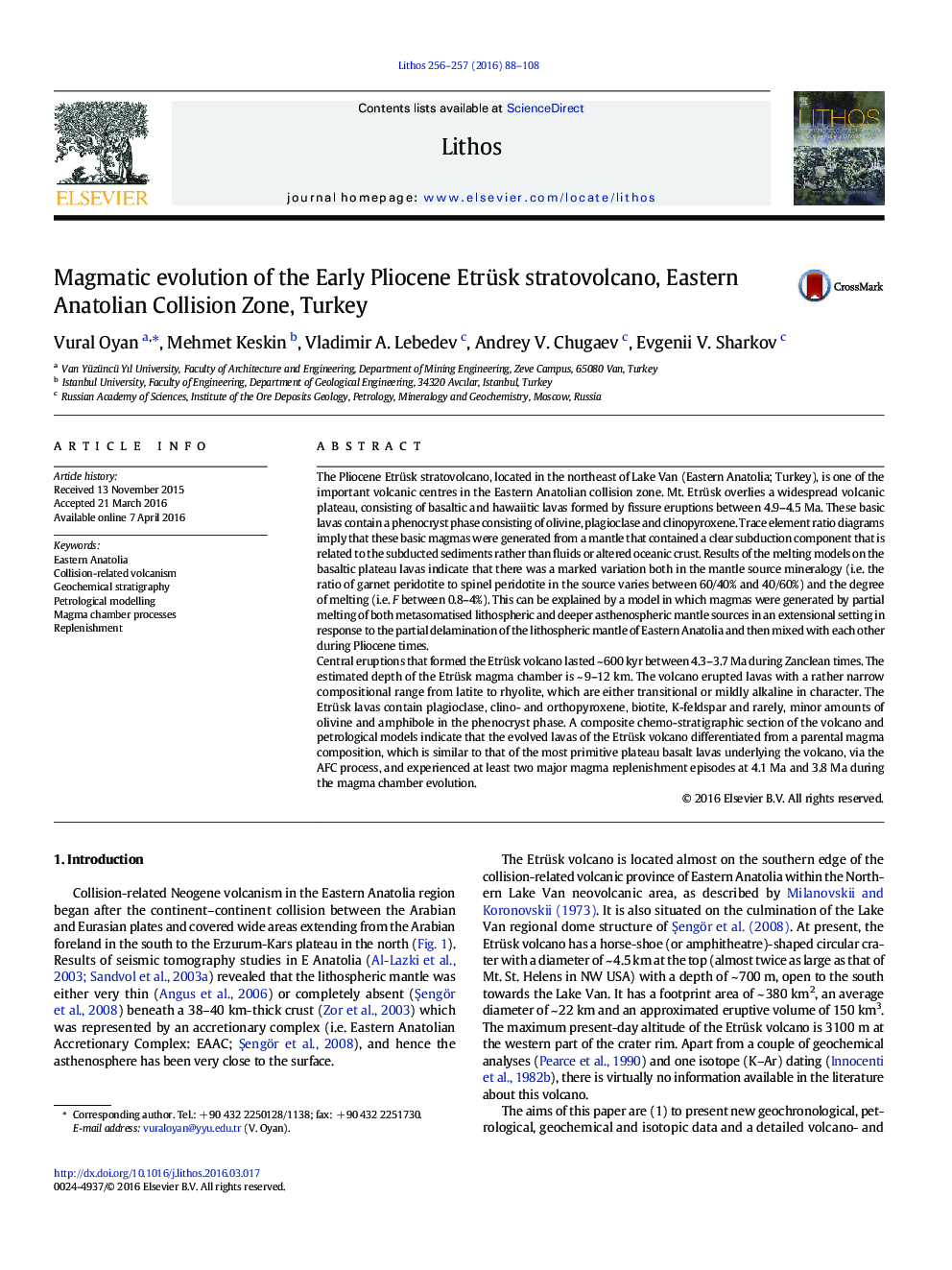| Article ID | Journal | Published Year | Pages | File Type |
|---|---|---|---|---|
| 4715490 | Lithos | 2016 | 21 Pages |
•We constructed a composite chemo-stratigraphic section of the Etrüsk volcano.•Our study presents new geochemical, isotopic and K–Ar radiometric dating.•We constructed petrologic models to interpret the mantle source characteristics.•AFC and periodic replenishment were operational during evaluation of the Etrüsk.•Magma chamber was possibly located around 10–12 km depth beneath the Etrüsk.
The Pliocene Etrüsk stratovolcano, located in the northeast of Lake Van (Eastern Anatolia; Turkey), is one of the important volcanic centres in the Eastern Anatolian collision zone. Mt. Etrüsk overlies a widespread volcanic plateau, consisting of basaltic and hawaiitic lavas formed by fissure eruptions between 4.9–4.5 Ma. These basic lavas contain a phenocryst phase consisting of olivine, plagioclase and clinopyroxene. Trace element ratio diagrams imply that these basic magmas were generated from a mantle that contained a clear subduction component that is related to the subducted sediments rather than fluids or altered oceanic crust. Results of the melting models on the basaltic plateau lavas indicate that there was a marked variation both in the mantle source mineralogy (i.e. the ratio of garnet peridotite to spinel peridotite in the source varies between 60/40% and 40/60%) and the degree of melting (i.e. F between 0.8–4%). This can be explained by a model in which magmas were generated by partial melting of both metasomatised lithospheric and deeper asthenospheric mantle sources in an extensional setting in response to the partial delamination of the lithospheric mantle of Eastern Anatolia and then mixed with each other during Pliocene times.Central eruptions that formed the Etrüsk volcano lasted ~ 600 kyr between 4.3–3.7 Ma during Zanclean times. The estimated depth of the Etrüsk magma chamber is ~ 9–12 km. The volcano erupted lavas with a rather narrow compositional range from latite to rhyolite, which are either transitional or mildly alkaline in character. The Etrüsk lavas contain plagioclase, clino- and orthopyroxene, biotite, K-feldspar and rarely, minor amounts of olivine and amphibole in the phenocryst phase. A composite chemo-stratigraphic section of the volcano and petrological models indicate that the evolved lavas of the Etrüsk volcano differentiated from a parental magma composition, which is similar to that of the most primitive plateau basalt lavas underlying the volcano, via the AFC process, and experienced at least two major magma replenishment episodes at 4.1 Ma and 3.8 Ma during the magma chamber evolution.
Graphical abstractFigure optionsDownload full-size imageDownload as PowerPoint slide
